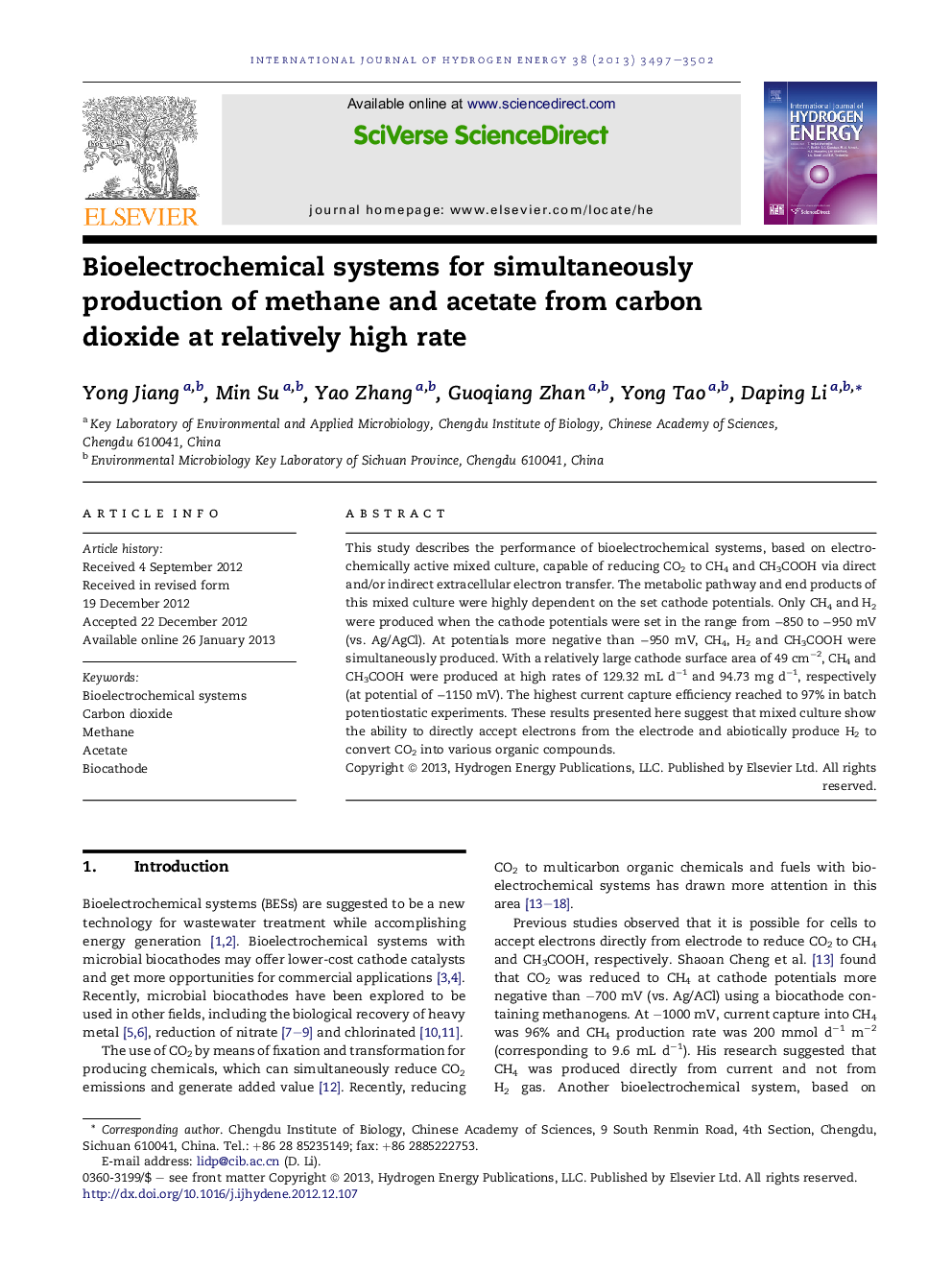| Article ID | Journal | Published Year | Pages | File Type |
|---|---|---|---|---|
| 1275766 | International Journal of Hydrogen Energy | 2013 | 6 Pages |
This study describes the performance of bioelectrochemical systems, based on electrochemically active mixed culture, capable of reducing CO2 to CH4 and CH3COOH via direct and/or indirect extracellular electron transfer. The metabolic pathway and end products of this mixed culture were highly dependent on the set cathode potentials. Only CH4 and H2 were produced when the cathode potentials were set in the range from −850 to −950 mV (vs. Ag/AgCl). At potentials more negative than −950 mV, CH4, H2 and CH3COOH were simultaneously produced. With a relatively large cathode surface area of 49 cm−2, CH4 and CH3COOH were produced at high rates of 129.32 mL d−1 and 94.73 mg d−1, respectively (at potential of −1150 mV). The highest current capture efficiency reached to 97% in batch potentiostatic experiments. These results presented here suggest that mixed culture show the ability to directly accept electrons from the electrode and abiotically produce H2 to convert CO2 into various organic compounds.
► Bioelectrochemical systems were based on electrochemically active mixed microflora. ► Simultaneously produced CH4 and CH3COOH from CO2 in bioelectrochemical systems. ► Metabolic pathway and end products were dependent on set cathode potentials. ► CH4 and CH3COOH were produced at high rates.
